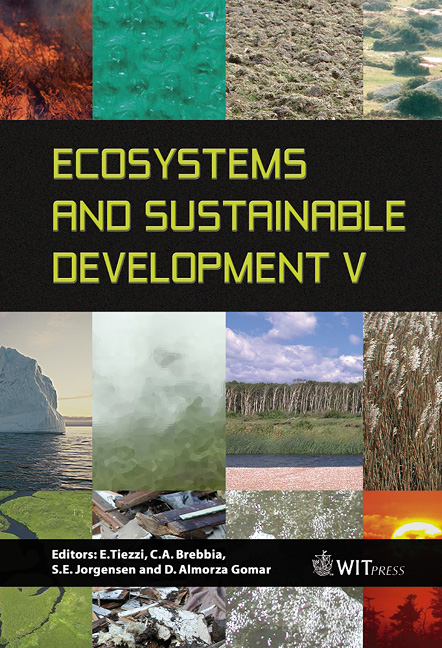How Nature And Men Could Better Interact: On Ecosystem Service Evaluation And Nutrient Recycling In A Principal-agent-framework
Price
Free (open access)
Transaction
Volume
81
Pages
12
Published
2005
Size
377 kb
Paper DOI
10.2495/ECO050391
Copyright
WIT Press
Author(s)
E. A. Nuppenau
Abstract
This paper deals with the economic and ecological aspects of recycling organic matter to agriculture. It perceives nature as a service provider for such things as decomposing waste and enrichment of soil nutrients. As a novelty, nature’s services are supported by human labour, external nutrient influx, and land assignment. Nature is perceived as seeking fitness and a quasi-objective function of nature is introduced, whereas humans are seeking services at minimal payments. 1. The paper starts with nature composed of an accumulating and a decomposing compartment. 2. Nature’s fitness and human profits are simultaneously derived in a sequential process of optimal behaviour, i.e. we model the interaction by applying a principal agent framework whereas nature is an agent and humans are the principal. 3. As a result, an optimal exchange of services (recycling) and payments (labour) is endogenously determined. As a reference, we can consider alternative dumping costs of waste and have to refer to nutrient prices in agriculture. With respect to testing the economic viability of recycling, the competitiveness of organic matter recycling is assured against the dumping of waste. By this we receive the first suggestion of a frontier function that delineates fitness and welfare. Keywords: recycling, evaluation of econ system services, principal-agent-model. 1 Introduction Recycling organic matter, closing nutrient cycles, and improving energy efficiency is en vogue in agriculture. Generally speaking, to contemplate on ecological-economic efficiency of food and nutrient systems is popular [1]. In principle nature offers a double-dividend or cheap service to humans:
Keywords
recycling, evaluation of econ system services, principal-agent-model.





